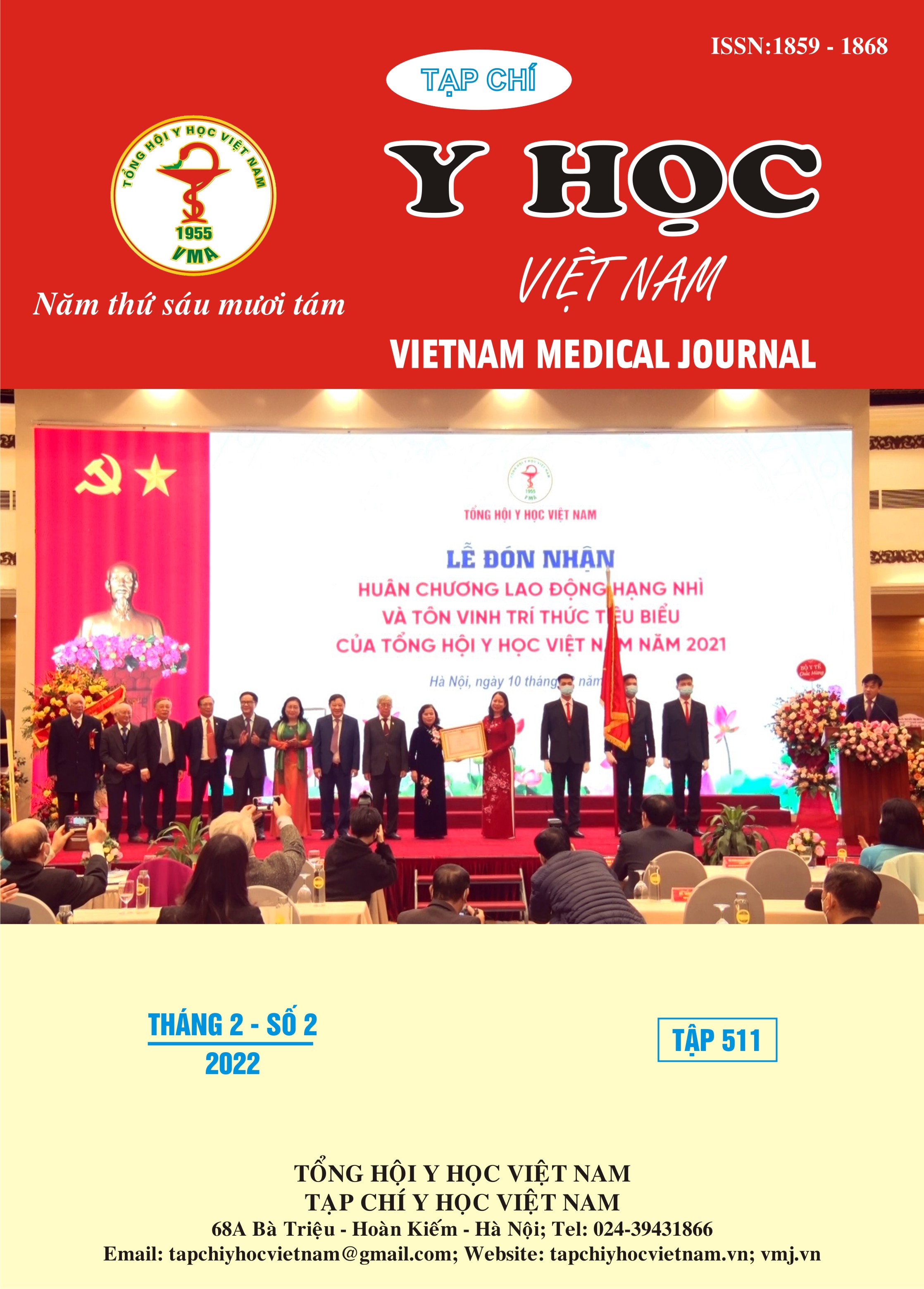STUDY ON THE IMMUNE STATUS TO SARS-COV-2 IN THE POPULATION OF HANOI
Main Article Content
Abstract
Objectives: to assess the concentration of SARS-CoV-2 antibodies in the community and identify factors related to antibody levels. Subjects and methods: 3522 people in Hanoi, aged 12 and over, including those who have been vaccinated and have not been vaccinated against COVID-19. Venous blood collection, anticoagulation with heparin, quantification of antibody levels in the blood by electrochemiluminescence immunoassay method. Results: Among 3522 study participants, the number of people who had not been vaccinated, had received 1 shot and received 2 shots, respectively, were 633 (17.97%), 234 (6.64%) and 2656 (75.41%). The proportion of people who have been infected with the virus participating in the study is 1.45% and the number of people identified as F1 is 1.33%. The mean antibody concentrations in men and women were 1295.23 ± 2511.72 (U/mL) and 1536.61 ± 2678.59 (U/mL). The average antibody concentration generated after injection by each vaccine is 1199.3 ± 2209.92 respectively (AZD1222); 2461.73 ± 3283.13 (BNT162b2); 3793.67 ± 2685.12 (MRNA-1273); 153.36 ± 511.82 (BBIBP-CorV) (p < 0,001). The BNT162b2 and mRNA-1273 vaccines produced high antibody levels that gradually decreased after 4 months, while AZD1222 produced antibodies rapidly during the first month and then remained stable throughout the next 5 months. Conclusions: The concentration of SARS-CoV-2 antibodies in women is higher than in men. The group < 18 years old had the highest antibody levels while the group > 80 years old had the lowest antibody levels. The antibody levels produced by different vaccines are significantly different. Antibodies were highest after mRNA-1273 vaccination, lowest after BBIBP-CorV vaccination. There is a difference in the time to appear and maintain antibodies after vaccination with different vaccines, in which AZD1222 has an antibody retention time that lasts more than 5 months.
Article Details
References
2. WHO. Media Statement: Knowing the risks for COVID-19. Published 2020.
3. Post N, Eddy D, Huntley C, et al. Antibody response to SARS-CoV-2 infection in humans: A systematic review. PloS One. 2020;15(12):e0244126. doi:10.1371/journal.pone.0244126
4. Huang B, Cai Y, Li N, et al. Sex-based clinical and immunological differences in COVID-19. BMC Infect Dis. 2021;21:647. doi:10.1186/s12879-021-06313-2
5. Tu MK, Chiang SH, Bender RA, Wong DTW, Strom CM. The Kinetics of COVID-19 Vaccine Response in a Community-Vaccinated Population. J Immunol. Published online January 17, 2022. doi:10.4049/jimmunol.2100919
6. Yang HS, Costa V, Racine-Brzostek SE, et al. Association of Age With SARS-CoV-2 Antibody Response. JAMA Netw Open. 2021;4(3):e214302. doi:10.1001/jamanetworkopen.2021.4302
7. Wei J, Stoesser N, Matthews PC, et al. Antibody responses to SARS-CoV-2 vaccines in 45,965 adults from the general population of the United Kingdom. Nat Microbiol. 2021;6(9):1140-1149. doi:10.1038/s41564-021-00947-3
8. Szczepanek J, Skorupa M, Goroncy A, et al. Anti-SARS-CoV-2 IgG against the S Protein: A Comparison of BNT162b2, mRNA-1273, ChAdOx1 nCoV-2019 and Ad26.COV2.S Vaccines. Vaccines. 2022;10(1):99. doi:10.3390/vaccines10010099


